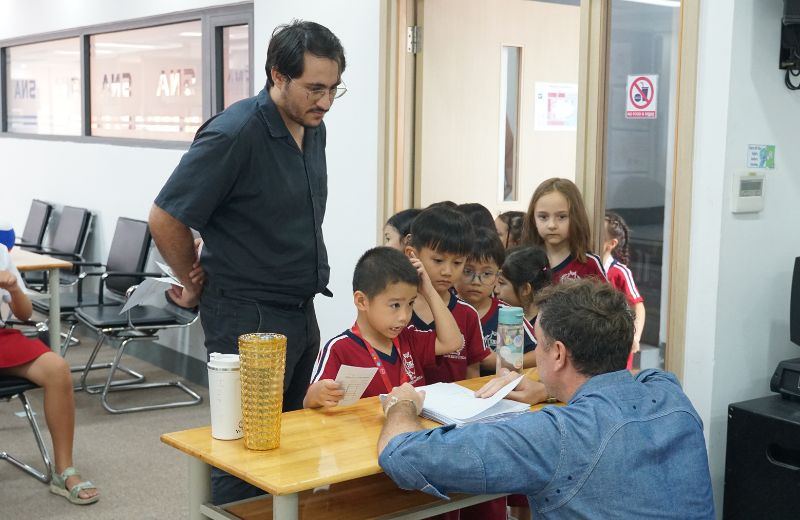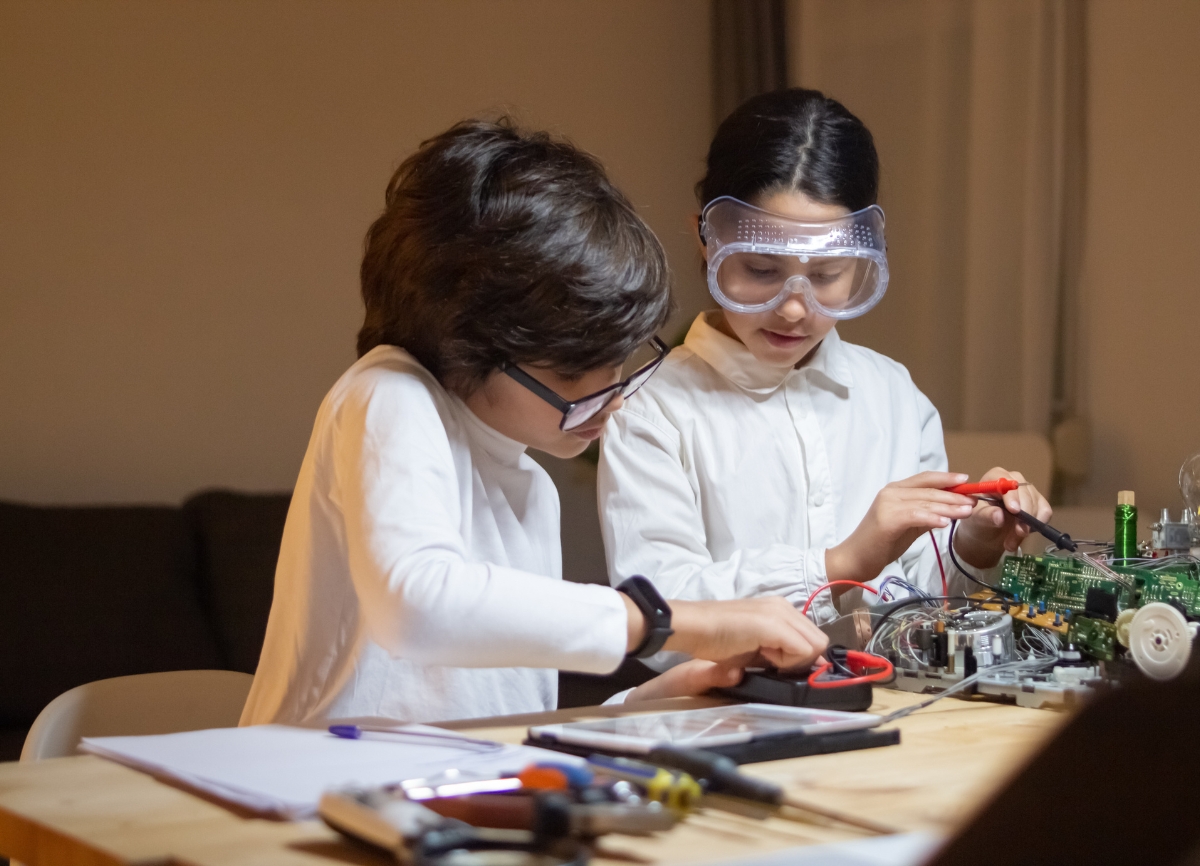What is the STEM education model? exploring the 5E model in STEM
Modern education is no longer just about transmitting knowledge; it must also help students develop skills, critical thinking, and the ability to solve real-world problems. The STEM model – an acronym for Science, Technology, Engineering, and Mathematics – is one of the most innovative directions in global education. In particular, the application of the 5E model in STEM teaching is creating a significant shift in how students approach and master knowledge.
What is the STEM education model?
The STEM model is an interdisciplinary, integrated educational method that allows students to learn and apply knowledge from four fields—Science, Technology, Engineering, and Mathematics—to solve practical problems. Instead of learning each subject in isolation, STEM creates a learning environment that is highly exploratory and application-oriented, helping students to:
- Understand the true nature of problems;
- Apply interdisciplinary knowledge to solve situations;
- Develop skills in proactive learning, creativity, and group collaboration.
This is not just a new way of learning but also a journey that helps students become global citizens, ready for the challenges of the 21st century.
Understanding the 5E model in STEM education
Among various STEM teaching methods, the 5E model is considered the most effective and easily applicable instructional framework today. It is a pedagogical structure designed to promote learning through a process of experience, exploration, deep understanding, and application.
What are the structural features of the 5E model?
The 5E model consists of 5 main stages:
- Engage: Capture students’ attention through questions, games, or curiosity-arousing real-world situations.
- Explore: Students investigate problems on their own, conduct experiments, or engage in hands-on activities to understand the core concepts.
- Explain: The teacher helps students organize their knowledge and draw conclusions from their recent experiences.
- Elaborate: Students apply what they have learned to new situations, enhancing their ability to use their knowledge.
- Evaluate: Students self-assess their learning process, provide feedback, and reflect on their experience for future improvement.
The 5E model is not only scientific but also highly flexible, making it suitable for many grade levels and particularly effective for teaching STEM in Primary and Middle School.

Benefits of applying the 5E model
Implementing the 5E model in STEM lessons offers numerous benefits:
- Increases proactivity: Students are at the center of the learning process, empowered to explore, ask questions, and find answers themselves.
- Promotes critical thinking: Through the process of explaining, analyzing, and evaluating, students learn to reason and argue logically.
- Connects theory to practice: Instead of rote learning, students get to apply their knowledge to solve real-world problems.
- Boosts interest and enjoyment in learning: Students won’t feel bored because they are constantly being challenged, creating, and expressing their opinions.
What to consider when applying the 5E model in STEM education?
- Create relatable contexts: The initial “Engage” situations should stem from everyday phenomena so students can easily connect with them.
- Encourage student discussion: During the “Explore” and “Explain” phases, teachers should create opportunities for students to work in groups, discuss, and debate ideas.
- Integrate technology: Using simulation software and digital devices can enhance the effectiveness of exploration and presentations.
- Use diverse assessment methods: Instead of only grading the final product, teachers should evaluate the learning process, thinking skills, and collaborative abilities of students.

The integrated STEM model at the International School of North America (SNA) Saigon South
At the International School in Ho Chi Minh City – SNA Saigon South, the STEM model and the 5E method are integrated into the IB Programme from Primary to High School through:
- Core academic lessons: Subjects integrate STEM knowledge with the 5E method to create lively and practical classes.
- Interdisciplinary projects: Students carry out projects such as designing water-saving devices, sensor-equipped robots, or smart cities—all of which begin with an “Engage” phase and end with “Evaluate”.
- Science Fairs and Academic Exhibitions: These events provide a platform for students to present their products, pitch their ideas, and receive feedback from teachers and peers.
- After-school clubs: Robotics, digital design, Python programming, and more.
SNA Saigon South also boasts modern, state-of-the-art facilities, with fully equipped Lab and Design rooms featuring everything from 3D printers and laser cutters to advanced digital design tools. This creates an optimal environment for students to experience the STEM education model in a practical way that inspires creativity every day.

STEM education is no longer an unfamiliar concept, especially when implemented with modern methods like the 5E model. If you are looking for a school that helps your child learn through discovery and develop comprehensive thinking and skills, SNA – International School of North America is the ideal choice, where every STEM lesson is a journey toward the future.





















